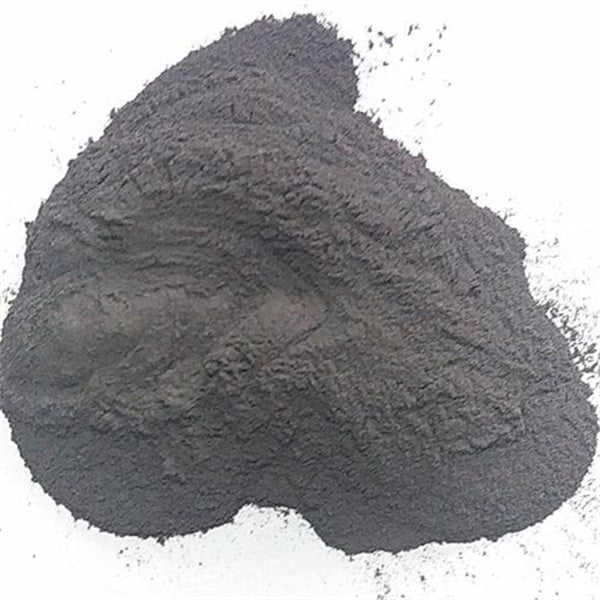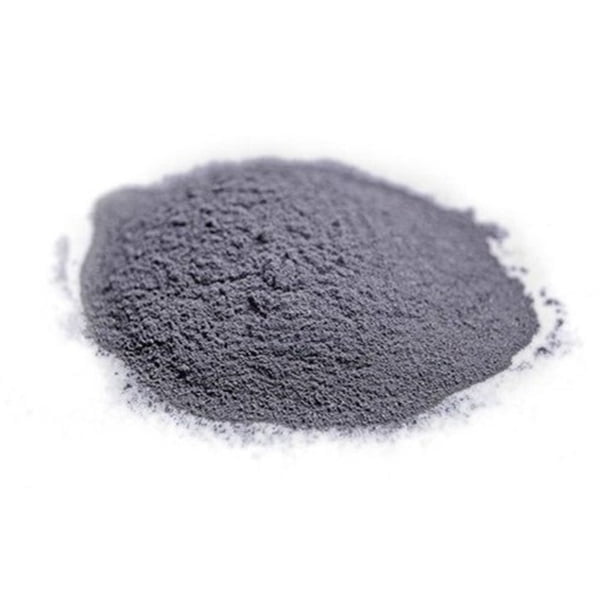Common models for stainless steel 3D printed metal powder
Table of Contents
The world of 3D Printed Metal Powder has unveiled a treasure trove of possibilities, revolutionizing the way we design and manufacture objects. But when it comes to building strong, resilient parts, stainless steel steps into the spotlight. As a champion of corrosion resistance and boasting impressive strength, stainless steel powders are a popular choice for 3D printing applications. But with a variety of options available, choosing the right one can feel like navigating a labyrinth. Fear not, intrepid explorer! This guide will equip you with the knowledge to conquer the realm of stainless steel 3D Printed Metal Powder.
316L stainless steel: The All-Around Champion
Imagine a metal warrior, impervious to rust’s insidious attacks, ready to take on the harshest environments. That’s 316L stainless steel in a nutshell. It’s the undisputed king of the 3D printing realm, thanks to its exceptional blend of properties:
- Corrosion Resistance: 316L boasts superior resistance to corrosion, making it ideal for applications exposed to saltwater, chemicals, and harsh weather. Imagine printing a boat part that laughs in the face of salty sea air, or a chemical processing component that shrugs off corrosive liquids – that’s the power of 316L.
- Versatility: This champion is a jack-of-all-trades, well-suited for a wide range of applications. Need a sturdy medical implant? Check. A durable pipe fitting for your industrial setup? Absolutely. 316L’s adaptability makes it a popular choice across various industries.
- Weldability: Unlike some of its stainless steel brethren, 316L welds beautifully. This allows for the creation of complex 3D printed parts with seamless joins, enhancing structural integrity.
- Biocompatibility: For those venturing into the frontiers of medical applications, 316L’s biocompatible nature makes it a strong contender. It plays a vital role in the creation of prosthetics and other medical implants.
However, like any warrior, 316L has its limitations:
- Cost: Compared to some other options, 316L can be a bit pricier. But hey, great power often comes at a premium, right?
- Strength: While strong, 316L isn’t the absolute strongest stainless steel powder. If sheer muscle is your top priority, you might need to consider other contenders.

304 Stainless Steel 3D Printed Metal Powder
Think of 304 stainless steel as the reliable workhorse of the 3D printing world. It offers a good balance of properties, making it a solid choice for many applications:
- Affordability: Compared to 316L, 304 is a more budget-friendly option. This makes it ideal for projects where cost is a major consideration.
- Corrosion Resistance: While not quite as impressive as 316L, 304 still offers excellent resistance to corrosion in everyday environments. Think household appliances, architectural components, or even food processing equipment – 304 can handle it.
- Formability: This versatile metal is highly formable, allowing for the creation of intricate 3D printed designs. Unleash your creativity and explore complex geometries with 304.
Here’s where 304 might not be the perfect fit:
- Harsher Environments: If your application involves exposure to harsh chemicals, saltwater, or extreme temperatures, 304 might not be the best choice. Consider 316L for those situations.
- Strength: Again, similar to 316L, 304 isn’t the strongest stainless steel powder out there.
17-4PH Stainless Steel: The High-Strength Specialist
Imagine a metal warrior clad in gleaming armor, ready to take on immense pressure and stress. That’s 17-4PH stainless steel, a champion in the realm of strength. This martensitic stainless steel boasts some impressive features:
- High Strength: 17-4PH shines when it comes to strength. Through a heat treatment process called precipitation hardening, this metal can achieve exceptional tensile strength, making it ideal for applications like aerospace components or high-pressure equipment.
- Good Corrosion Resistance: While not quite on par with 316L, 17-4PH offers decent resistance to corrosion, making it suitable for many environments.
However, even the strongest warriors have weaknesses:
- Brittleness: The trade-off for 17-4PH’s impressive strength is a slight increase in brittleness compared to austenitic varieties like 316L.
- Machinability: Machining 17-4PH can be a bit more challenging compared to some other options. This can add to the overall production cost and complexity.
Here’s a table summarizing the key points of the three most common stainless steel 3D printing powders we’ve discussed so far:
| Feature | 316L Stainless Steel | 304 Stainless Steel | 17-4PH Stainless Steel |
|---|---|---|---|
| Corrosion Resistance | Excellent | Good | Decent |
| Versatility | High | High | Moderate |
| Weldability | Excellent | Excellent | Good |
| Biocompatibility | Yes | No | No |
| Cost | Higher | Lower | Moderate |
| Strength | Moderate | Moderate | High |
| Formability | Good | Good | Moderate |
| Machinability | Good | Good | More Difficult |
Choosing the Right Champion:
Selecting the ideal stainless steel powder for your 3D printing project depends on your specific needs. Here are some key considerations:
- Application: What will the final product be used for? Does it require exceptional corrosion resistance like a boat part, or high strength like an aerospace component?
- Environment: Will the printed object be exposed to harsh chemicals, saltwater, or extreme temperatures?
- Budget: Cost is always a factor. While 316L offers superior properties, 304 might be a more budget-friendly option for less demanding applications.
- Complexity: Consider the level of detail and intricate geometries required in your design. 304 and 316L generally offer good formability, while 17-4PH might be trickier to work with for highly detailed designs.
15-5PH Stainless Steel: The Precipitation Hardening Contender
15-5PH stainless steel joins the ranks as another precipitation hardening contender. Similar to 17-4PH, it offers impressive strength through a heat treatment process. Here’s a breakdown of its key characteristics:
- Strength: 15-5PH boasts high strength after precipitation hardening, making it suitable for applications requiring significant load-bearing capabilities.
- Corrosion Resistance: While not as exceptional as 316L, 15-5PH offers decent resistance to corrosion in many environments.
- Weldability: Similar to 17-4PH, welding 15-5PH requires special techniques due to its martensitic nature.
However, 15-5PH shares some of the limitations of its precipitation hardening cousin:
- Brittleness: The trade-off for high strength is a slight increase in brittleness compared to austenitic varieties.
- Machinability: Just like 17-4PH, machining 15-5PH can be more challenging, adding to production complexity.
Exploring Other Stainless Steel Options
The realm of stainless steel 3D printing powders extends beyond the main contenders we’ve discussed. Here’s a glimpse into some lesser-known, but equally interesting options:
- 254 SMO: This superstar shines in highly corrosive environments. Think offshore oil rigs or chemical processing plants – 254 SMO can handle the toughest conditions. However, its exceptional resistance comes at a price – it’s a more expensive option.
- 410 Stainless Steel: This budget-friendly choice offers good wear resistance and some corrosion resistance. It’s a suitable option for applications where cost is a major concern and extreme environments aren’t a factor.
- 420 Stainless Steel: Known for its high hardness, 420 stainless steel is often used for components requiring wear resistance, such as cutting tools or gears. However, its corrosion resistance is lower compared to other options.
Benefits of Using Stainless Steel Powders in 3D Printing
So, why choose stainless steel powders for your 3D printing endeavors? Here are some compelling reasons:
- Superior Strength and Durability: Stainless steel powders offer impressive strength and durability, making them ideal for applications that demand high performance. Imagine creating lightweight yet robust components for aerospace or automotive industries.
- Exceptional Corrosion Resistance: Certain grades of stainless steel powders boast exceptional resistance to rust and corrosion. This opens doors for applications in harsh environments, from marine components to chemical processing equipment.
- Biocompatibility: For the medical field, some stainless steel powders offer biocompatible properties, making them suitable for implants and prosthetics.
- Lightweight Potential: Compared to some traditional materials, stainless steel offers a good strength-to-weight ratio. This allows for the creation of lightweight yet strong components, a crucial factor in applications like aerospace or transportation.
- Reduced Waste: 3D printing with stainless steel powders can potentially reduce waste compared to traditional subtractive manufacturing techniques. This translates to a more environmentally friendly approach.
Of course, there are also some considerations to keep in mind:
- Cost: Stainless steel powders can be more expensive than some other 3D printing materials. This is a factor to weigh against the benefits they offer for your specific application.
- Post-Processing: Depending on the chosen powder and desired finish, some post-processing steps like heat treatment or polishing might be necessary. This can add to the overall production time and cost.
- Specialization: Working with stainless steel powders might require specialized equipment and expertise compared to some other 3D printing materials.

Future Frontiers: Innovation in Stainless Steel Powders
The world of stainless steel 3D printing powders is constantly evolving. Here’s a glimpse into some exciting advancements on the horizon:
- Development of New Alloys: Researchers are continually developing new stainless steel alloys specifically tailored for 3D printing. These alloys might offer even better combinations of strength, corrosion resistance, and other desirable properties.
- Improved Powder Characteristics: Advancements in powder production techniques can lead to more consistent particle size and shape distribution. This translates to better printability and potentially improved final product quality.
- Multi-Material Printing: The future might see the integration of stainless steel powders with other materials in a single 3D printing process. This could unlock the creation of parts with unique combinations of properties.
FAQ
Q: What is the most commonly used stainless steel 3D printing powder?
A: 316L stainless steel is the undisputed champion in the realm of 3D printing powders. It offers a winning combination of corrosion resistance, versatility, weldability, and biocompatibility.
Q: What factors should I consider when choosing a stainless steel powder for 3D printing?
A: The ideal choice depends on your specific application. Consider factors like the required strength, corrosion resistance, budget, design complexity, and final environment the printed object will be exposed to.
Q: Are there any limitations to using stainless steel powders in 3D printing?
A: While offering impressive benefits, stainless steel powders can be more expensive compared to some other materials. Additionally, post-processing steps might be necessary, and working with these powders might require specialized expertise.
Q: What are the benefits of using stainless steel powders for 3D printing?
A: Stainless steel powders offer a compelling combination of strength, durability, corrosion resistance, biocompatibility, and design freedom. They can potentially reduce waste compared to traditional manufacturing and create lightweight yet robust components.
Q: What’s on the horizon for stainless steel powders in 3D printing?
A: The future is bright! We can expect the development of new alloys with even better properties, improved powder characteristics for enhanced printability, and the exciting prospect of multi-material printing unlocking even more possibilities.
Share On
MET3DP Technology Co., LTD is a leading provider of additive manufacturing solutions headquartered in Qingdao, China. Our company specializes in 3D printing equipment and high-performance metal powders for industrial applications.
Inquiry to get best price and customized Solution for your business!
Related Articles
About Met3DP
Recent Update
Our Product
CONTACT US
Any questions? Send us message now! We’ll serve your request with a whole team after receiving your message.

Metal Powders for 3D Printing and Additive Manufacturing
COMPANY
PRODUCT
cONTACT INFO
- Qingdao City, Shandong, China
- [email protected]
- [email protected]
- +86 19116340731

















